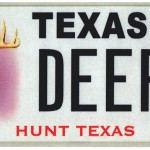Texas Wildfires Scattered Birds to the Wind
Tens of thousands of birdwatchers across the country are participating in the Audubon Society’s annual Christmas Bird Count this month. But in Central Texas, the tradition has a special importance. During a year of exceptional drought, heat and wildfires, conservationists across Texas are paying close attention to the welfare of local bird populations.
This is the 112th year of the count, which helps Audubon and other groups to do a wildlife census of birds. Houston birdwatcher Michael Jewell didn’t know what to expect from the outing this year. When he drove to Austin last weekend to do the count, it was his first opportunity to see the devastation wrought by the Bastrop wildfires. “Although the fire to us may be big, maybe from a birds-eye-view, maybe it’s not as large as we think it is,” he said.
A birdwatching hike through the Hyatt Lost Pines, outside the burn zone, began to reveal some answers.
Louise Ridlon, the President of the Bastrop Master naturalists, was leading the hike. She says the fire destroyed nesting habitat for some species, especially those that nest in pine trees. “Some of the smaller song birds I think would be more likely to be affected,” she said.
But it probably provided better habitat for other birds, she said, “because they pick bugs out of the bark and target dead trees or dying trees because it does attract insects.” And then a bird chirps, as if on cue. “Something flew over!” Ridlon shouts. “that’s a red bellied woodpecker back there!”
The bird counts in the Hyatt Lost Pines and McKinney Roughs Park (also outside the burn zone) are actually the first to ever be done in these parks. They indicated diverse species were present, but organizers don’t have numbers from previous years to compare their results to. Preliminary results from Travis County, also bordering the Bastrop area, show the count there may have broken a new record for bird diversity, with a lot of Western species spotted.
Travis County Audubon’s Sheila Hargess says there are two theories why bird diversity seems to be on the rise. “One is that we’ve been under persistent drought,” she says, so the birds are foraging outside of their traditional range. “The other theory is that potentially, the fires west of us in West Texas, New Mexico and Arizona have caused species to have to push into our area to find food.”
Though there are likely feathered refugees from the Bastrop fires as well. “There’s that [John] Muir quote that everybody paraphrases which is ‘tug on one thing in nature and you find that it’s connected to everything else,” says Margie Crisp, a birdwatching enthusiast who lives outside of Elgin.The day the Bastrop fires started, she immediately noticed more birds in her yard. She thinks many of them fled the fire and are trying to re-establish themselves nearby.“The hummingbird population tripled overnight, for instance,” she says.
We’ll have a clearer sense of the impact of the Bastrop fires after bird watchers take their annual count inside parts of the burn zone. Dr. David Mitchell started leading the count that includes Bastrop State Park in 1983.
The fire burned about ninety five percent of the park, so Mitchell is looking for extra volunteers this year to provide a first glimpse of which birds are appearing in the scorched landscape. “Even though I don’t expect to see a lot of birds in the park,” he says, “I really want to get an accurate count.”
The Bastrop State Park Christmas bird count takes place a little after Christmas, January 1st.
If you’re interested in volunteering you can send an email to dimerdave@yahoo.com. More information is available at the Houston Audubon Society’s bird count webpage.


